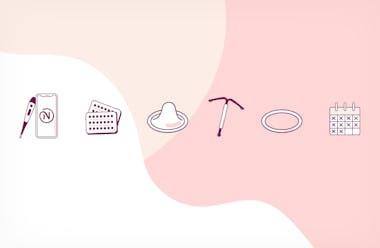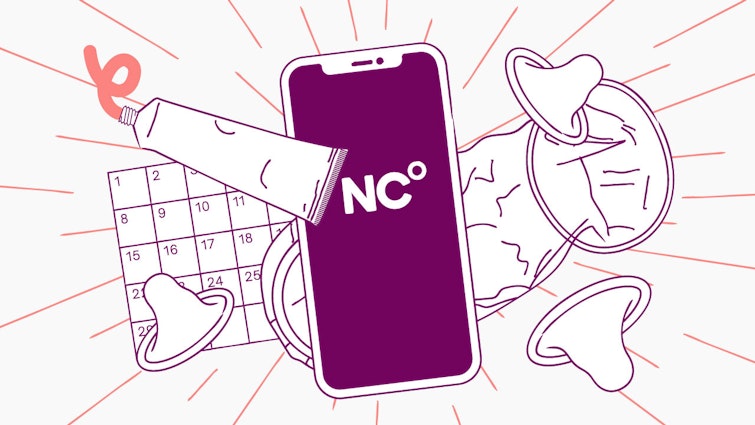Switching Birth Control: How Do I Change my Birth Control Method?
Over our fertile lifetimes we are likely to change birth control methods multiple times. This frequency of changing birth control could be a symptom of a lack of suitable options, or the fact our needs and preferences change over time. It’s an important decision, if and when you change your birth control, and in this post we’ll help guide you through the change.

Initial conversations when changing birth control
It's always worth having a discussion with a healthcare professional before making a decision about your reproductive health. This should be an open conversation where you can list your preferences and choose from suitable options. We recommend doing some research beforehand so you can go into your discussion with specific questions for your doctor and below we’ve outlined some things to consider when considering making a change. It’s also worth noting that many women find it helpful to have a conversation with their partner before they make a change….
Switching birth control pills
Since different birth control pills contain different doses of hormones, it’s common for us to be prescribed different kinds of birth control pills to suit our needs. If you experience birth control side effects on birth control containing estrogen you might be prescribed a lower dose on the combined pill. Other women should forego birth control with synthetic estrogen altogether and, if still looking for an oral contraceptive, opt for the mini pill or progestin-only pill which uses only synthetic progesterone.
Before switching birth control pills, we recommend speaking to your healthcare professional to ensure you stay safe and find the best option for you. If you’re taking a break between switching birth control pills it’s important you either abstain from sex or use condoms to prevent pregnancy.
Changing between hormonal birth control options
There are more hormonal birth control options than just birth control pills. As well as oral contraceptives, there are IUDs, injections, patches, and implants. These methods vary in how they are used and some require fitting from healthcare professionals.
Switching non-hormonal birth control methods
Unlike hormonal methods, switching non-hormonal birth control methods don’t require a prescription or a fitting from a healthcare professional. The exception here is the copper IUD which does require insertion. The copper IUD is also a method of emergency birth control if it is fitted up to five days after unprotected sex has taken place.
Other methods of non-hormonal birth control methods include condoms, fertility awareness-based methods and Natural Cycles. While switching non-hormonal birth control methods may not require a prescription, we still recommend you consider your options carefully, as there are a number of things to think about, including birth control effectiveness.
Changing from hormonal birth control to non-hormonal birth control
There are many reasons you might choose to switch from a hormonal birth control option to a non-hormonal one. These include unwanted birth control side-effects, or if you’re thinking about planning a pregnancy in the near future. As it can take time for your cycle to come back to how it used to be when you stop taking hormonal birth control. Depending on the method and how long you’ve been using it for, it can either happen quite quickly, or it might take longer.
There are many advantages to switching to non-hormonal birth control. For example, you can learn more about your body and the patterns of your unique cycle, if you aren’t suppressing ovulation as with hormonal methods.
Changing from non-hormonal birth control to hormonal birth control
Other women may choose to start on hormonal birth control after using a non-hormonal method. There are many reasons women choose to switch to hormonal birth control from a hormone-free method. In some cases, hormonal birth control can also be prescribed to alleviate the symptoms of medical conditions, such as endometriosis.
Depending on the type of hormonal birth control, and where you are in your cycle, your new birth control method can sometimes start to work straight away, but most of the time it must be taken for a number of days before it becomes effective. It’s worth remembering that no birth control is 100% effective.
Switching birth control methods to Natural Cycles
Many women have chosen to change birth control methods and join the 2 million-plus women who have registered for Natural Cycles. A hormone-free option, Natural Cycles uses the basal body temperature method, paired with an algorithm that learns and predicts your fertile window. Depending on your birth control method, you’ll either be able to get started with Natural Cycles straight away, or you might need to wait a little bit until you can start.
- If you’re currently using non-hormonal birth control such as condoms or a fertility awareness-based method, you can get started with Natural Cycles straight away.
- If you are using birth control pills, we recommend you finish all the active pills in the packet, and then get started with Natural Cycles the day after you've finished all active pills.
- If you have a hormonal IUD or an implant, you can start using Natural Cycles the day after it has been removed. The same goes for the hormonal patch and the NuvaRing (vaginal ring).
- For the contraceptive injection, you should use Natural Cycles once the effect of the injection has worn off (8-13 weeks depending on the type of birth control shot).
- If you have a copper IUD, you can use this in tandem with Natural Cycles, since it doesn’t prevent ovulation, but you may also choose to have it removed if you want to use Natural Cycles as your primary method of birth control.
Natural Cycles works by finding your fertile window and letting you know when you can and can’t get pregnant - because you’re not fertile every day of your cycle! Since hormonal birth control affects our cycles, you can expect the app to give you more red (fertile) days in the beginning before it finds your ovulation. Natural Cycles isn’t any less effective during this time, but you must be willing to use condoms or abstain from sex until you get green days.
We hope you’ve learned something about switching birth control methods. At Natural Cycles we believe in birth control choice and want every woman to feel empowered to make informed decisions about her own reproductive health. If you are considering switching birth control, why not find out if Natural Cycles could work for you?


